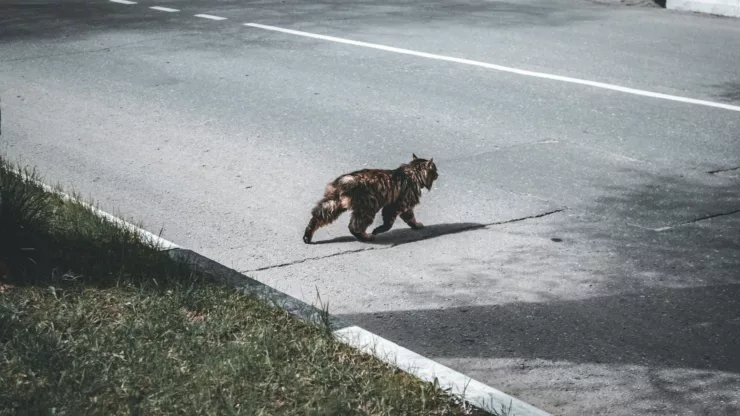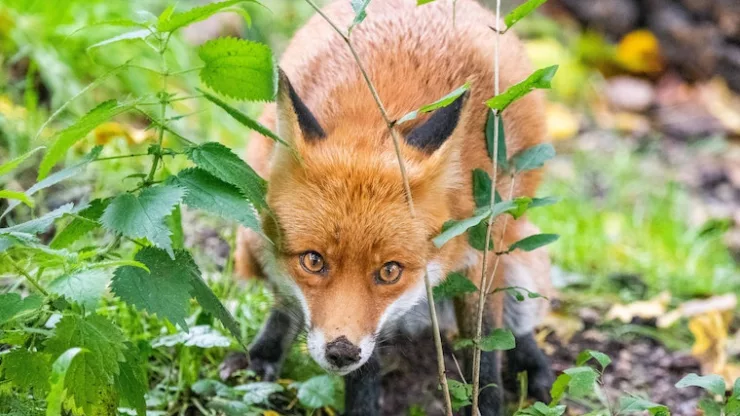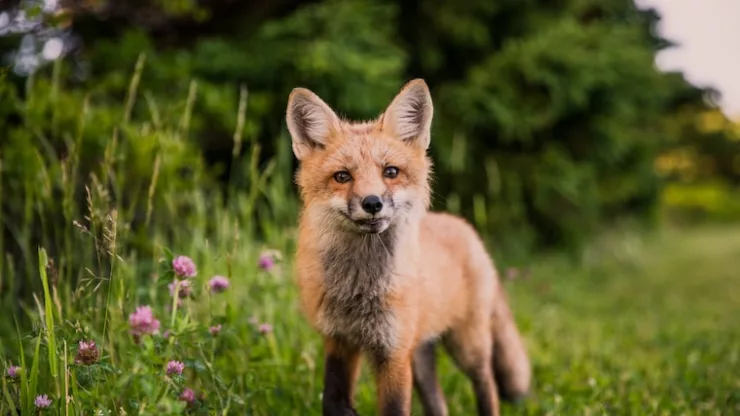Urban Coyotes: Surviving and Thriving in Urban Environments
As cities continue to grow and expand, it’s not uncommon to see urban wildlife adapting and thriving in these new environments.
One such example is the urban coyote, a species that has managed to adapt and thrive in urban areas across North America.
In this article, we’ll take a closer look at the rise of urban coyotes, their adaptability, behavior, coexistence with humans, and best practices for mitigating conflicts.
Jump to Section
Introduction
Coyotes are a common sight in many rural and suburban areas, but over the past few decades, they’ve been increasingly spotted in urban environments.
This rise in urban coyotes can be attributed to a variety of factors, including habitat loss, food availability, and human encroachment on wildlife habitats.
However, despite their proximity to humans, urban coyotes have managed to adapt and thrive in these new environments.
Understanding the Rise of Urban Coyotes: A Brief Overview
The Coyote’s Adaptability: How it Survives in Urban Environments
Coyotes are known for their adaptability and resilience, which has enabled them to survive in a wide range of habitats, including forests, deserts, and grasslands.
In urban environments, coyotes have managed to find new sources of food and shelter, including garbage cans, pet food, and green spaces.
They’ve also learned to avoid humans and have become more active at night to avoid detection.
Coyote Behavior in Urban Areas: What You Need to Know
It’s important to understand coyote behavior in urban areas to avoid conflicts and ensure coexistence.
Coyotes are generally timid and avoid humans, but they may become more aggressive if they feel threatened or if they’ve become habituated to humans.
They may also become more active during mating season (January to March) and when raising pups (April to August).
The Importance of Coexisting with Urban Coyotes
Understanding Coyote-Human Interactions: Tips for Staying Safe
Coexisting with urban coyotes means understanding their behavior and taking precautions to avoid conflicts.
Here are some tips for staying safe:
- Do not feed coyotes or leave out food or water for pets outside.
- Keep pets on a leash and supervise them when they’re outside.
- Do not approach coyotes or allow them to approach you.
- If a coyote approaches you, make loud noises, wave your arms, and throw objects to scare it away.
- If you encounter a coyote while walking your dog, pick up your dog and back away slowly.
The Role of Urban Coyotes in Maintaining Ecosystem Balance
Urban coyotes play an important role in maintaining ecosystem balance by controlling populations of rodents and other pests.
They also help to manage populations of other wildlife, such as deer and rabbits, which can cause damage to gardens and other green spaces.
Mitigating Coyote Conflicts: Best Practices for Urban Areas
Non-Lethal Management Strategies for Coyotes in Urban Environments
There are several non-lethal management strategies that can be used to mitigate coyote conflicts in urban areas, including:
- Educating the public about coyote behavior and coexistence.
- Implementing coyote hazing programs to discourage habituation.
- Removing attractants, such as garbage and pet food, from outdoor areas.
- Installing coyote-proof fencing around gardens and other green spaces.
- Using humane deterrents, such as motion-activated sprinklers, to discourage coyotes from entering your property.
How to Keep Your Pets Safe from Coyotes: Tips and Tricks
Coyotes are opportunistic predators and may view pets as potential prey. To keep your pets safe from coyotes, consider the following tips:
- Keep pets inside at night, or supervise them when they’re outside.
- Install coyote-proof fencing around your property.
- Do not leave pets outside unattended, even in a fenced yard.
- Keep food and water bowls inside, and do not leave pet food outside.
Coyote Deterrents for Your Home and Yard
Here are some effective coyote deterrents for your home and yard:
- Motion-activated sprinklers: These devices spray water when motion is detected, scaring coyotes away.
- Coyote rollers: These are spinning cylinders that prevent coyotes from jumping over fences.
- Coyote-proof fencing: This type of fencing is made from strong materials that are difficult for coyotes to climb or dig under.
The Importance of Community Involvement in Coyote Management
Effective coyote management requires community involvement and education. By working together, communities can implement non-lethal management strategies, educate the public, and reduce the likelihood of conflicts.
Conclusion: Urban Coyotes as a Natural Part of Our Urban Landscape
Urban coyotes are a natural part of our urban landscape, and with proper education and management strategies, we can coexist with these fascinating creatures.
By understanding their behavior, taking precautions, and implementing non-lethal management strategies, we can reduce the likelihood of conflicts and ensure the continued success of urban coyotes.
FAQ
Are coyotes dangerous to humans?
Coyotes are generally timid and avoid humans, but they may become more aggressive if they feel threatened or if they’ve become habituated to humans.
It’s important to take precautions to avoid conflicts, such as keeping pets on a leash and supervising them when they’re outside.
What should I do if I encounter a coyote?
If you encounter a coyote while walking your dog, pick up your dog and back away slowly while making loud noises, waving your arms, and throwing objects to scare the coyote away.
Can coyotes climb over fences?
Coyotes are excellent climbers and can jump over fences that are less than six feet tall.
Consider installing coyote-proof fencing or using other deterrents to prevent coyotes from entering your property.
What should I do if I find a sick or injured coyote?
If you find a sick or injured coyote, do not approach it. Contact your local animal control agency or wildlife rehabilitation center for assistance.
I’m a nature enthusiast and creator of Metro Wilds and have spent years exploring the great outdoors.
With a passion for environmental conservation and sustainability, I have dedicated my career to writing about the beauty and wonders of nature, as well as the threats facing our planet.
Contact me at [email protected] for assistance.





